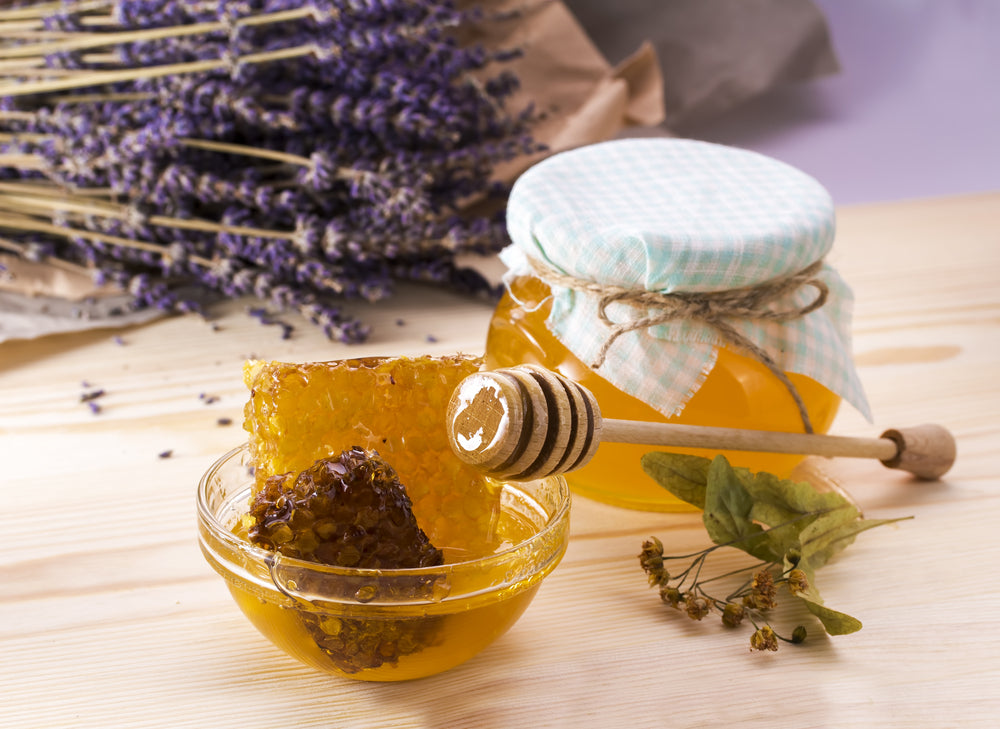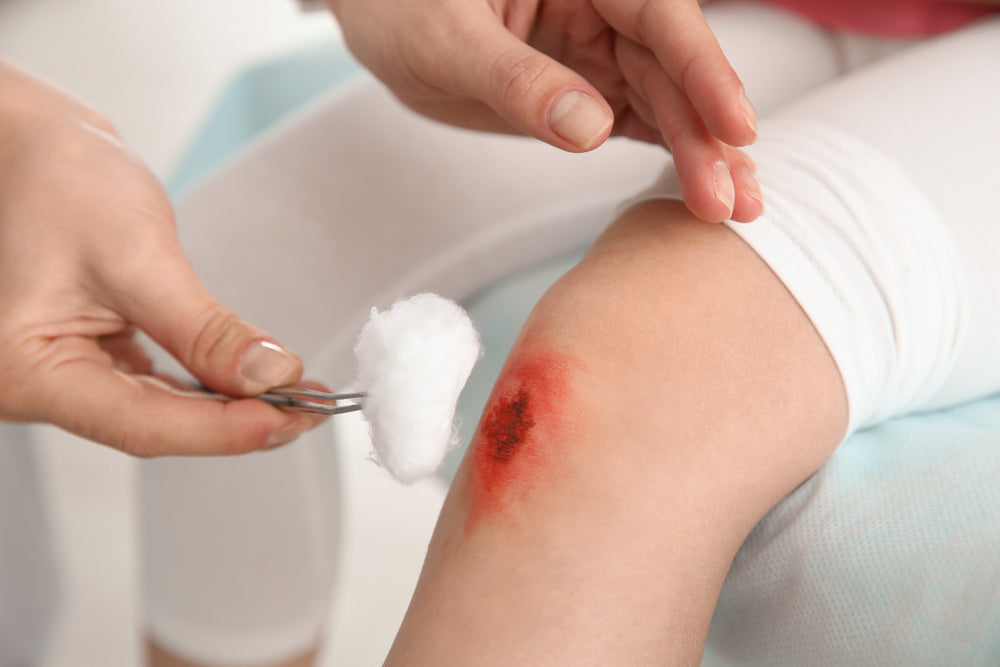
Manuka honey and its healing properties have been a hot topic for research for several years. Regarding effective wound-healing, honey has been considered one of the best remedies since ancient times, as far as 4,000 years ago. Where advantages of using honey as a wound dressing are highly prized due to faster healing, it is the medical-proven economical pick to look after even difficult wounds.
According to medical literature, Manuka honey brings plenitude of benefits in soothing and minimizing scars, deodorizing wounds, hastening the process of healing injuries, and encouraging the flow of lymph in one way or another. The biological properties and therapeutic activities of honey in wound healing are unbelievable!
Honey And Healing!!
The use of medical grade, sterilized, laboratory-tested honey is highly preferable for helping people with chronic and non-healing wounds as it comes packed with bioactive components, high sugar content, impressive antibacterial properties, a unique pH balance, anti-odour properties, and methylglyoxal (MGO).
A recent study concluded that when you use honey as a moist wound dressing or a wound dressing material, you observe faster tissue growth promotion for efficient wound repair, increased oxygen supply, significant suppression of inflammation, and quicker autolytic debridement. Edwar Fuentes Pérez, a biochemist at the University of Chile, says, “There is a lot of scientific evidence that shows that honey allows complex wounds to heal.”
We can say medicinal Manuka honey and wounds make good partners! But the question is, how it must be applied or used for wounds to reap the maximum benefits?!
How To Apply Manuka Honey On Wounds?
It is safe to say that you can topically apply medical-grade, sterilized Manuka honey at multiple stages of the wound healing process for different types of wounds. The relation between Manuka honey and wound healing is proportional. As far as the frequency of dressing changes is concerned, it depends on how quickly the honey is being watered down by the exudate. With time as the honey starts healing, the dressings for wounds are changed less frequently. You might have to change dressings twice a day in the case of acute inflammatory wounds. For easy removal of the dressing, moisten it with saline.
Does manuka honey hurt when used as a wound dressing? Absolutely not! You can use honey for cuts and wounds for up to 5-7 days. According to a study, honey is known for healing partial thickness burns within 4 to 5 days more speedily compared to conventional dressings.
Two factors decide how effective the wound-healing will be: the quantity of honey and the technique chosen for applying the dressing.
Don’t use an aggressively higher amount of honey; else, you will be flooded with sugary syrup. The quantity of honey is determined by the volume of fluid being oozed from the wound. More the exudate, more substantial amounts of honey are needed.
If you are thinking of treating a wound or a burn injury with honey that hasn’t healed for months, you must seek medical guidance beforehand to know about the possibility of treatment and side effects. Luckily, honey bandaging can be done under multilayer compression dressing.
Do you have a deep wound bed? Are you treating an abscess with honey? If yes, always ensure that the wound bed is entirely filled with honey before applying the dressing.

Three Ways of Honey Use for Healing
How to use honey as a wound dressing? Generally, you must ask a wound care nurse to apply the honey on cuts and burns, but you can do it yourself, too. There are three methods to apply Manuka honey to a wound:
-
Applying honey directly onto the skin
Wash your hands with a quality soap because you really don’t want to expose your sensitive, injured area to bacteria. Now, pick a sterilized, cleaned applicator (a cotton ball or swab). Take honey in the recommended amount, dip the absorbent wound-contact material, and apply it gently onto the wound, cut, burn, or abrasion in the form of a thin layer. To avoid the risk of wound contamination and infection spread, ensure that you use a new cotton swab each time. You must not dip the applicator into the honey after it has already touched your skin.
Cover the honey-laced wound with a dressing and press the sticky sides down. Occlusive dressings seem like a better choice to trap the honey inside, not letting it seep. It is a practice of using sterile gauze pads or adhesive bandages to cover the wound. Don’t forget to wash your hands afterwards.
*Have a waterproof backing gauze for better wound management.
-
Applying honey to the dressing
If you find applying honey to the wound difficult and messy, you can choose an alternative method where honey is applied directly to the dressing. Wait for the honey-laced dressing to get saturated with the wound’s exudate and then replace it. Apart from dressing material, you can have your gauzes dipped in honey but remember; it probably will adhere to exposed tissues, causing severe pain during removal.
Instead of having marginally measured honey dressing, it must be cut to a larger size, extending beyond the wound to cover any immediate area (peri-wound area) of inflammation. In addition to honey, you can buy Manuka honey wound gel made with perfect formulas.
-
Honey-impregnated dressings
Last but not least, you can use honey-impregnated dressings (such as MediHoney brand dressings) – the cleanest option that cuts down all the stress of buying medical grade honey, applying it while taking care of infected wound contamination, etc. Manuka honey and wound dressings are suitable for deep as well as flat wounds.
Precautions & Complications of Using Manuka Honey as a Wound Dressing
Can I put honey on a wound?
Researchers and health practitioners advise the use of honey for burns and wounds but not to apply raw, unfiltered honey directly as it might contain contaminants causing certain complications such as infections, allergic reactions, etc. In some instances, purified and sterilized honey can trigger skin issues. Moreover, honey wound dressing and diabetes don’t go along because honey is only glucose, fructose, and sucrose.
It is recommended to pick the honey with UMF 10+ or above with the maximum antibacterial and antioxidant activity. Allergic reactions are the most common complication, and the signs include:
- Light-headedness
- Extreme swelling (body or facial)
- Nausea/vomiting
- Stinging or burning sensation where honey is applied topically
- Heavy/troubled breathing
*Manuka honey and wound healing research suggest that in case of experiencing any side effects or symptoms mentioned above, wash away the honey and consult a physician.
Thick, Rich & Smooth Manuka Honey
Nature’s Blends has the purest, minimally filtered, and raw Manuka honey harvested from the fertile lands of New Zealand. We retain maximum natural goodness with cold extraction to make it wholesome and highly therapeutic. From MGO 83+ to 800+ MGO ratings, Manuka honey is a sweet, dark cream to the dark brown delicacy worth adding to a healthy diet, skin, and beauty routine for a healthy gut and glowing skin.
We deliver it packed with potential antibacterial, antiviral, antioxidant, phenolic, and anti-inflammatory properties - a powerful superfood!